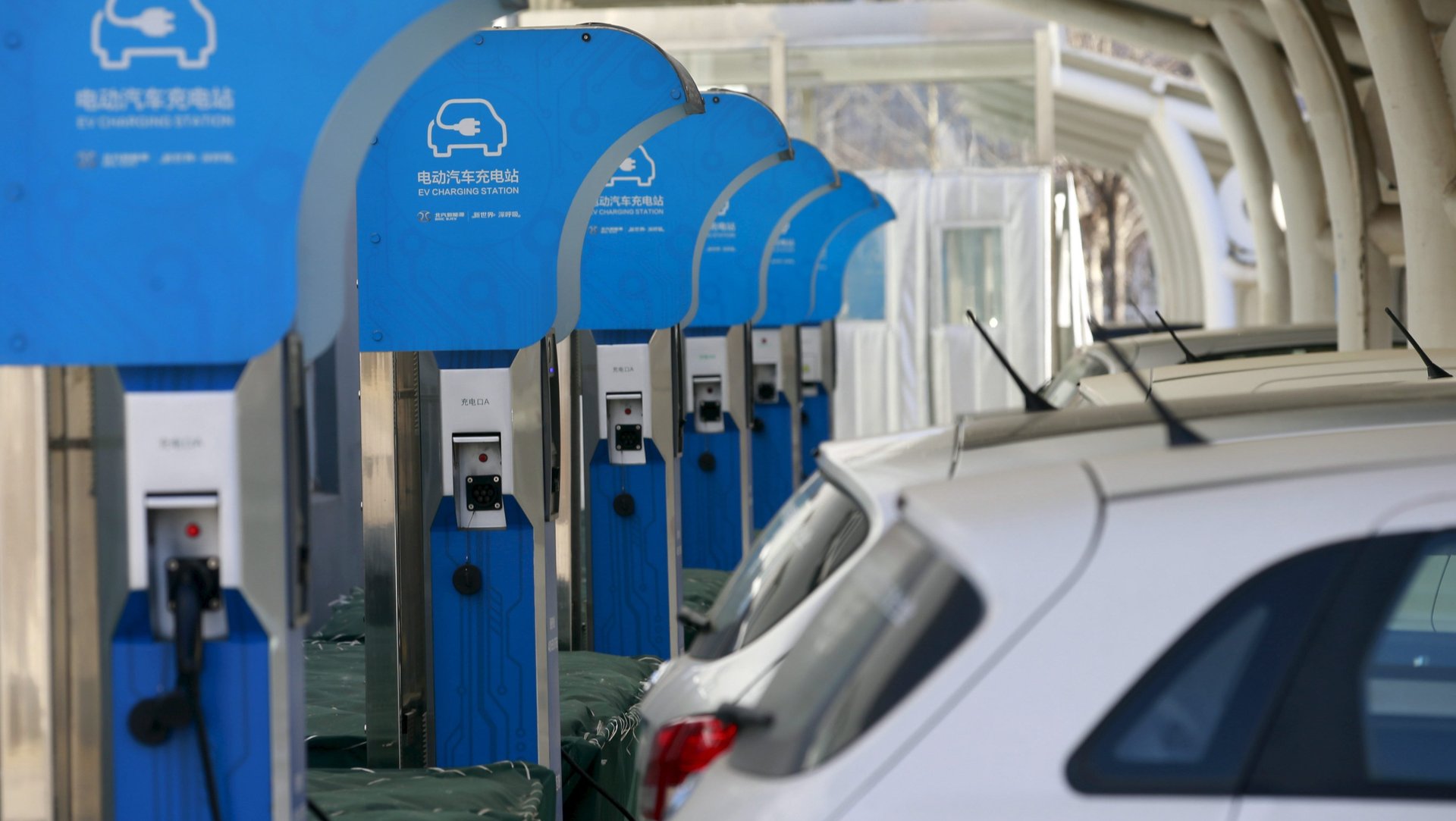China wants its electric-vehicle owners to have the best charging experience ever
As part of its battle against air pollution, China is putting hundreds of thousands more electric vehicles on the road each year—and also putting a fresh focus on making sure drivers don’t struggle too much to power their engines.


As part of its battle against air pollution, China is putting hundreds of thousands more electric vehicles on the road each year—and also putting a fresh focus on making sure drivers don’t struggle too much to power their engines.
Sales of electric vehicles (EV), including both fully electric and hybrid versions, reached half a million units (link in Chinese) in 2016, with the help of subsidies from the government. That was double the level of sales in Europe (221,000) and four times US sales (157,000). And the world’s biggest EV market wants more.
China said this week it aims to hit 2 million in sales of these vehicles in 2020, and for them to make up more than one-fifth of the total vehicle production and sales by 2025. At this pace, China would have about 5 million (link in Chinese, pdf, p.5) EVs on the road by 2020, according to its National Energy Administration (NEA).
You’d think that would be accompanied by increasing car-to-charger ratio, but, in fact, the ratio has been dropping. In 2015, the ratio was nine cars for every charger, about even with Japan at the time.
By the end of 2016, China had than 1 million EVs and around 150,000 charging stations, or some seven vehicles to every station (link in Chinese), according to the NEA. The country says it wants to add 900,000 charging stations by the end of 2017, which would bring the ratio down to about two cars per station, assuming 800,000 sales this year. By 2020, it plans for there to be one charger for each car.
That doesn’t mean people don’t have a hard time charging—that depends on how well distributed existing and new chargers are.
In Beijing, one of the largest EV markets in China (link in Chinese), Xu Zhiqiang, an EV taxi driver, told the state-owned newspaper People’s Daily last month that he worries a lot about finding a convenient charging station. “I get my car fully charged everyday before leaving home, but I am always thinking about locating a charging station,” Xu said (link in Chinese), adding “it only takes half an hour to 40 minutes to charge the car, but it is always hard to find one around you. Additionally, there would be two to three cars lining up usually.”
The city’s land resources department proposed in December that the Beijing should have one charging station every five kilometers (three miles) (link in Chinese). Another agency has said the city should aim for one station every kilometer or so in its central areas by 2020.